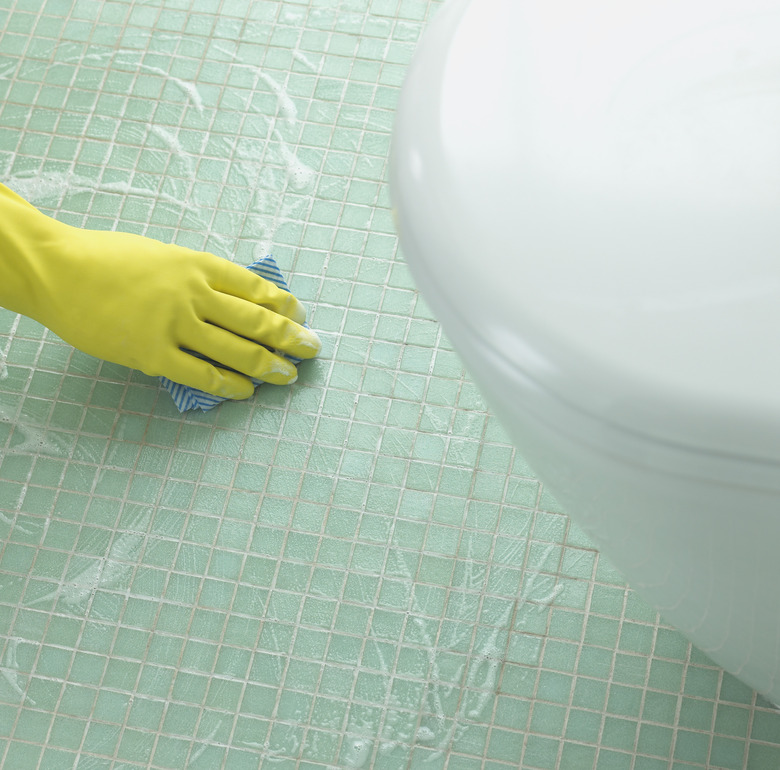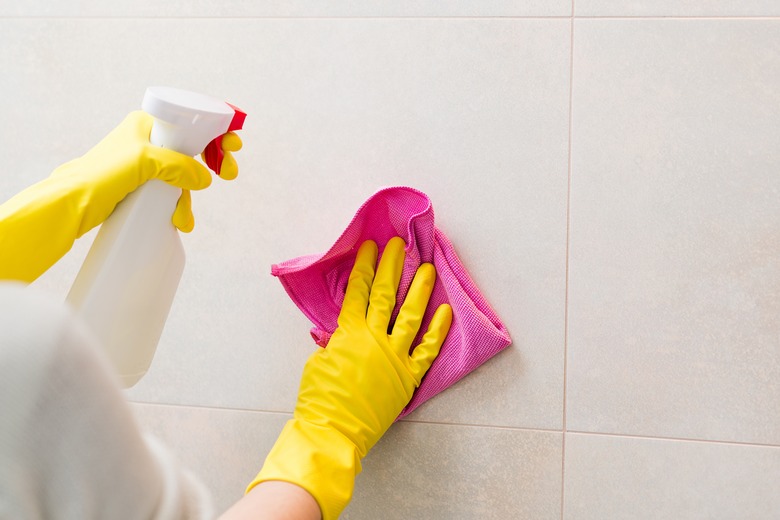Removing Stains From Tile: What You Should Know
Compared to other types of flooring, removing stains from tile floors is relatively easy, even if you do have grout stains to contend with. This, of course, will depend on the type of tile your floors have, as it is easier to remove stains from some types than from others. While some types of tile, like ceramic and porcelain, can be mopped clean with an everyday, all-purpose cleaner, porous stone tiles will require a different cleaning method for each type of stain.
Tile Floor Types and Staining
Tile Floor Types and Staining
Some types of tile often naturally repel stains, like ceramic tile and porcelain tile. These tiles can usually be wiped down or sprayed with an all-purpose cleaner to remove spills and prevent stains. Other types of tile are more porous and will stain easier, like marble, limestone and granite. In these floor tiles, stains — be they from liquids like coffee or oil or from materials like ink, dirt or mildew — are created when substances become absorbed into the surface of the stone tile, leaving a mark darker than the color of the stone.
Then, of course, are the grout joints in between the tiles, which can be especially prone to staining and can be a source of frustration when trying to get your tile floors looking sparkling clean. Most types of grout, and especially cement-based grout, are easily stained because this material is very porous and absorbs stains easily. The best way to prevent stains on your grout is to clean it regularly using an alkaline cleaner like Mr. Clean.
To prevent your grout joints from staining in the first place, the Tile Council of North America recommends applying a sealer. The grout type should be cement-based, not epoxy (which does not need a sealer). If the tile is glazed ceramic or porcelain tile, typically you seal only the grout joints; it's best not to seal the tile. By contrast, with unglazed tile and many types of natural stone or clay tiles, it's often advisable to seal the tile and the grout, typically with the same sealer, but not necessarily at the same time.
There are two main types of sealer: topical and penetrating. Topical sealer is less expensive and very effective, but it will leave a bit of a plastic-coated look to your grout. Penetrating sealer is more expensive but very durable, and it won't change the look of the grout.
Choosing the Right Floor Cleaner
Choosing the Right Floor Cleaner
Because not all tiles are created equally, the floor cleaners you use to remove stains from them will depend on the type of tile. Ceramic tile and porcelain tile floors can usually be wiped down or sprayed with an all-purpose cleaner to remove spills and avoid stains, or you can create a DIY natural cleaner using white vinegar and water to clean up.
Stone tiles are typically cleaned by creating a poultice made of a chemical cleaning agent and an absorbent powder that will absorb the stain out of the stone. However, different types of stains are best treated with different chemical agents. Absorbent powders include talcum powder, kaolin clay, powdered chalk and diatomaceous earth, although a white paper towel may also work in some cases.
Generally, stains from food, ink or dirt should be treated with hydrogen peroxide, although denatured alcohol may work better on ink. Oily stains like cooking oil, butter or even motor oil are best removed with acetone, while mold and mildew is effectively treated with bleach or products formulated to treat those stains specifically.
Many types of natural stone can be damaged by acidic cleaners, include mild acids like white vinegar. Always check product labels to confirm that the cleaner is safe to use on stone or other natural or porous tile materials.
How to Clean Stone Tile Floors
How to Clean Stone Tile Floors
- Blot the stain with a paper towel. Take care to not wipe the stain, as it can cause further damage to the surface of your tile.
- Flush the area with water, repeat a few times and dry the area with a clean cloth.
- Mix the cleaning agent with absorbent powder until they form the consistency of a thick paste.
- Carefully apply a thin, even layer of the paste about 1/2-inch thick over the stain.
- Cover the poultice with plastic and let it sit for 24 to 48 hours before removing the plastic and washing away the poultice with clean water, then dry the area.
- Repeat the treatment as needed until the stain is gone.


